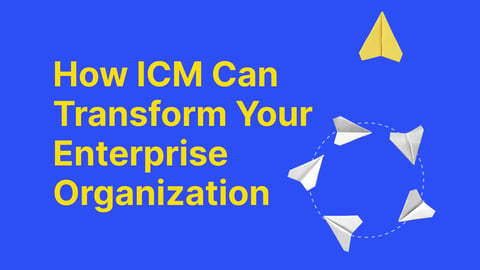Understanding how to build sales revenue is a constant puzzle for sales managers. What’s the best way forward? Should you find new channels to market? How do new products and upgrades fit into this picture? Should you cut prices to increase volume or maintain them to earn the premium a quality offering deserves?
All these issues – and many others - will matter in solving this puzzle. Compensation management has the potential to draw together all the threads that can help shape your sales success.
Paying salespeople and customer-facing teams more money can motivate them, especially when appropriately targeted. What might the proper method look like, and how can tools and technology help you implement it? Let’s explore this in more detail.
Why Does Compensation Management Matter?
Compensation management helps all compasses point north. While it often focuses on base salaries and commission rates for salespeople, it can also extend to bonus models for employees who don’t carry a quota. At its core, compensation management is about managing and directing the ‘right’ behavior, whether it’s maximizing shareholder value, managing costs, launching new products, or a range of other issues that need to be understood and executed.
For salespeople and those in customer-facing roles, it’s about keeping everyone focused on customers’ needs and aligning those needs with the company’s best interests. Understanding customers’ often changing requirements, engaging with them, and educating them about your unique capabilities is tough work, with plenty of hurdles to test the commitment of even the most motivated employees. At the same time, they need to deal with competitors trying to take the business. There’s a great deal to manage.
Another challenge is that the roles in a business can be so varied that it can be almost impossible to have a ‘one size fits all’ compensation model that works for everyone, at all levels, all the time. Given the complexities of most businesses, getting the issues of compensation management right is tricky. It can be even more difficult without the right data and insights to create a compensation model that helps increase sales.
How Can the Right Compensation Strategy Drive More Sales?
The ideal sales and commission models should reflect how customers buy. After all, they decide whether a sales campaign is successful. While every customer will have a unique approach to decision-making, sales managers and HR professionals need to consider a range of themes in designing the ideal compensation model.
People are often reluctant to engage with salespeople early in the sales cycle. While happy to be educated, they don’t want to be harassed, pressured, or irritated. A rule of thumb that many marketers use is that many B2B customers are already 60% down the sales process before they want to engage with a salesperson. The more you align how your customers want to buy with how you engage with them, the more likely they’ll do business with you rather than one of your competitors.
The buying process is typically complex, especially in B2B. The initial sifting of options typically takes place online. Customers want to understand which vendors are well-placed to potentially solve an issue. This often involves reading early-stage pieces – blog posts, case studies, or business cases. Their interest may grow by watching webinars or reading whitepapers that require more effort to digest but help develop their understanding of how a company can help them. The final stage is typically reading commercial material - brochures, customer testimonials, or training material, that help to crystalize their decision-making criteria. Only once a customer has gone through these stages will they want to engage with a salesperson.
With this model in mind, you can understand some variables you might want to consider as you build your compensation strategy. There’s a balance between revenue results for individuals, teams, and the whole company, and other measures that can help capture how well a sales team engages with customers. These can include meetings arranged, webinar attendance numbers, or the volume of digital touchpoints generated by a customer.
The right compensation tools can help you design models that capture how people buy from you and sales incentive plans that motivate your customer-facing employees.
What Tools Do You Need?
Data analytics lies at the core of a company’s ability to understand how customers want to buy from them and design a compensation strategy that maximizes their chances of success. Designing the right model uses three interrelated capabilities: revenue analytics, sales planning, and sales compensation management.
Revenue Analytics
Revenue analytics focuses on the dynamics and trends of where a business gets its revenue. While simple in principle, revenue analytics is complex and focuses on which business sectors or demographics will likely be the most lucrative for a business to engage with. Revenue analytics can help you understand how your customers buy, where they do their research, what type of content they use – blogs, webinars, whitepapers, brochures, for example – and when they’re most likely to engage with salespeople. You can also see what situations trigger purchases, cross-sells, upgrades, and cancellations.
You can identify where businesses are located, how ownership and subsidiaries are related, and other metrics that can help you understand how best to structure your market engagement from a sales and marketing perspective.
Revenue intelligence is fundamentally about data. Effective analytics requires data from finance, CRM, and eCommerce systems. Third-party data sources can also be captured and consolidated using Export, Load, Transform (ELT) capabilities in a data warehouse. AI and machine learning capabilities can be used to find trends and themes that provide the insight needed to develop the ideal compensation strategy.
Sales Planning
With this insight, you’re well-placed to fit the next piece of the puzzle into your journey: sales and territory planning. With a deep understanding of your market, your customers, and how they buy, you can design sales territories that optimize your results. This’ll include new business territories, account management territories, and territories for new and existing products. In some businesses, this process can become very complex. The smart move isn’t to eliminate this complexity but to automate how you organize it to stay on top of everything without getting overwhelmed.
This capability allows you to create sales territories that maximize revenue and ensure each one has the correct number of account managers. It can also help you better understand what blend of skills and experience you need to be successful.
Sales Compensation Management
With these two pieces in place, you can build the sales compensation management that gives you the desired results, depending on the complexity of your business and the customers you engage with. The fundamentals will focus on base salary, commission levels, territory quotas, and bonus models. These’ll need to be competitive.
The art – and the science - of deciding what metrics people are paid on is where you’ll likely need to invest the most effort. You first need to optimize your commission models to create challenging but achievable plans to maximize the business's sales revenue. You don’t want to create a commission model that is too easy – it’ll be unprofitable for the company. At the same time, you don’t want to create an unrealistic commission model. If the on-target earnings (OTE) aren’t as advertised, people will quickly learn that they can’t be successful and will find reasons to make excuses and leave.
You may also want to consider how you can innovate your commission models based on how customers buy from you. Maybe you should pay your account managers what their clients buy from you regardless of how they buy it, whether directly from the salesperson, through the website, or via an industry partner. This approach avoids situations where you have different salespeople in a business chasing the same customer, depending on the channel they wish to use, to the point where they collectively drive down the price the customer ends up paying.
Having the right incentive compensation management solution that helps you automate the analysis and management of market analytics, territory and quota planning, and incentive development and management can be a real game changer.
Learn how modern compensation managers are leveraging technology to enhance their role and take a more strategic position in the company by reading our latest guide, The Role of a Modern Sales Compensation Manager.




